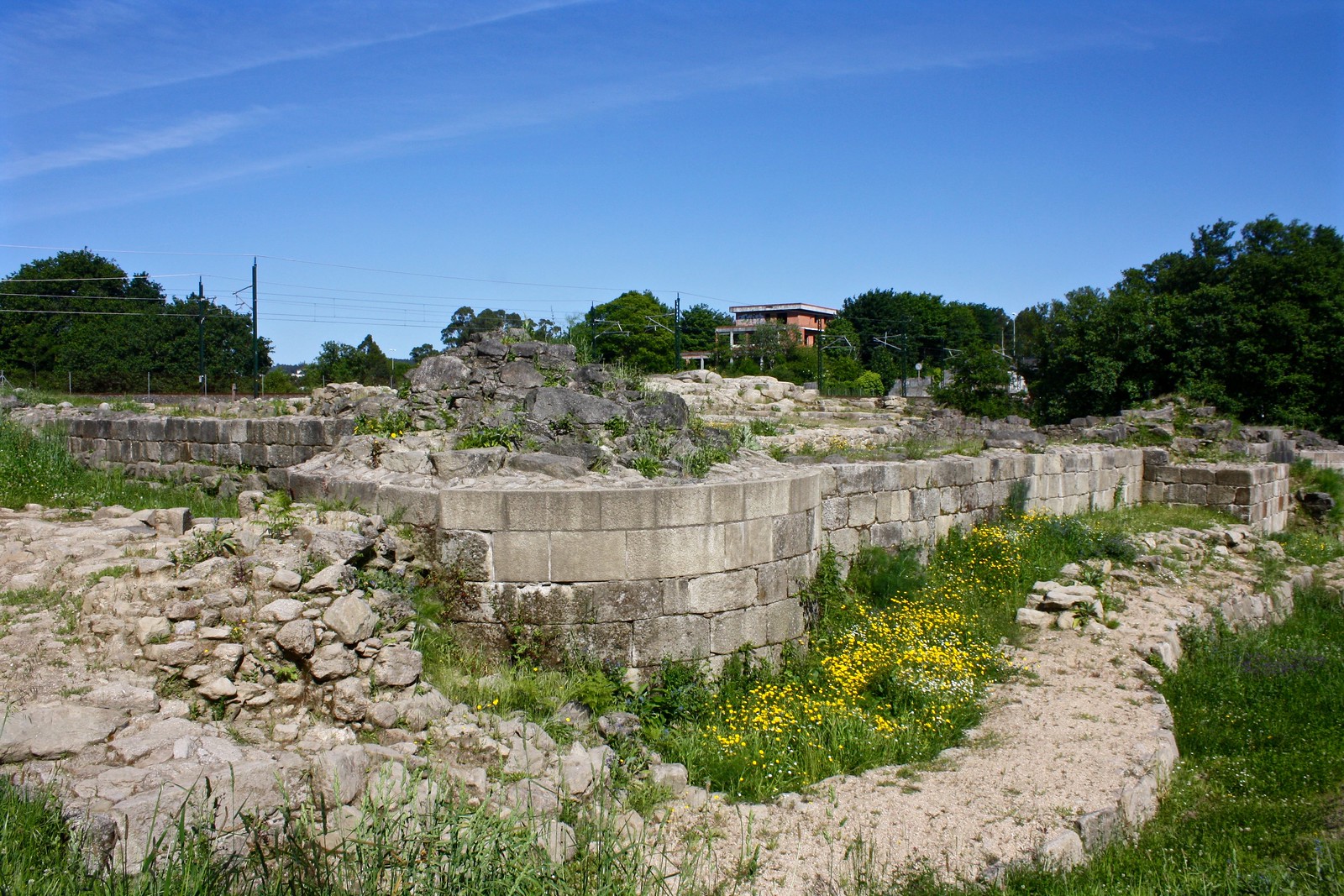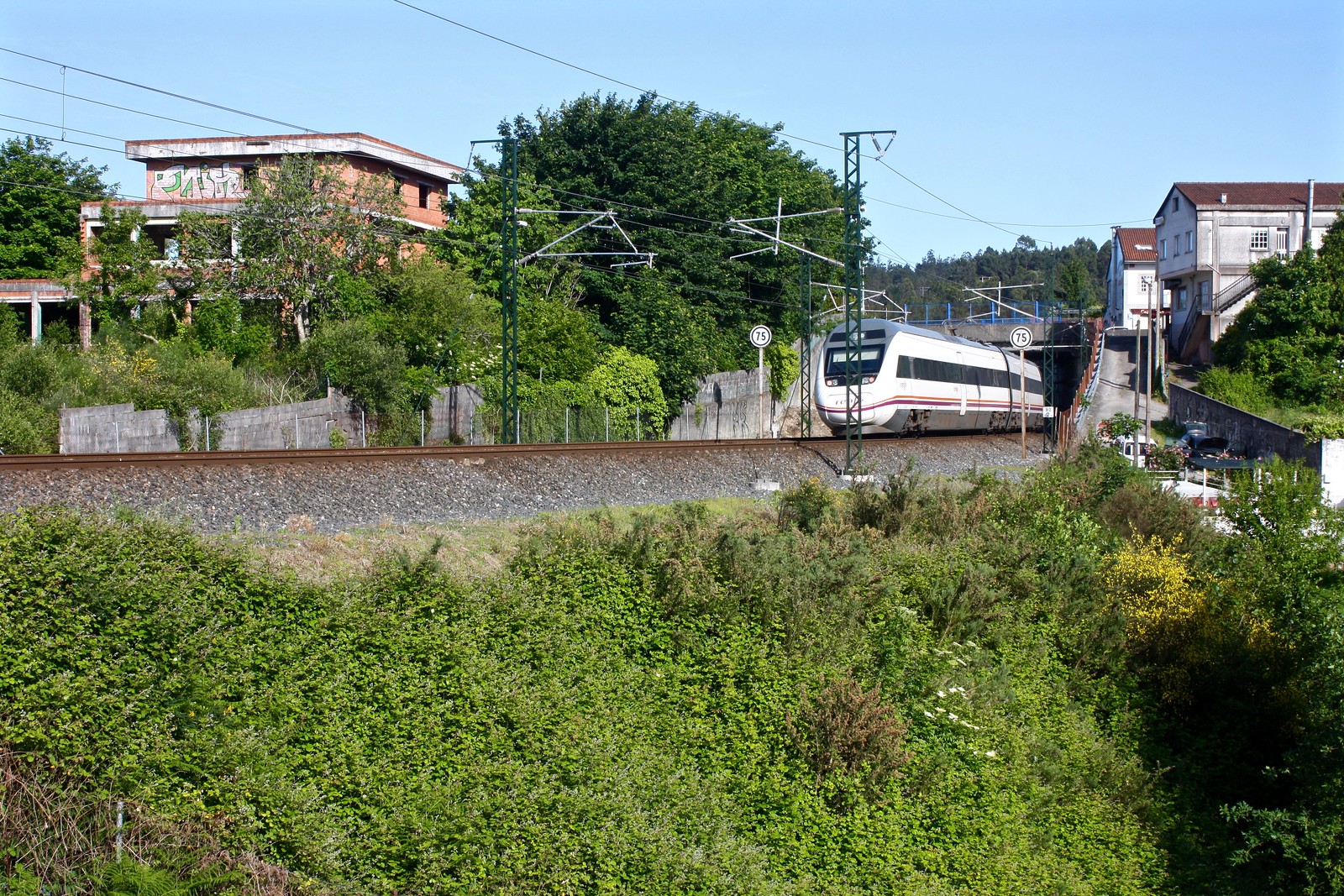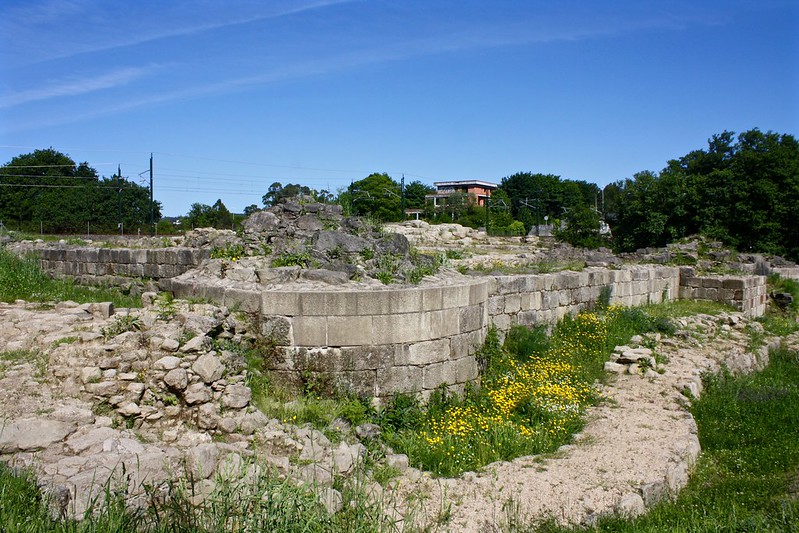Santiago de Compostela’s Rocha Forte Castle Ruins
 |
| The ruins |
It began as a passing blur, a brief break in between thick trees and rural farms as the train headed south out of Santiago. What did I just see? I wondered. Later, I would catch passing references to the crumbling foundations of a long-forgotten fortress, hiding in plain sight just outside of town. Then I came across banners advertising what was once “the largest castle in Galicia.” In a town known for its cathedral, its granite-paved old town, and its pilgrim heritage, I was intrigued that there was something more unique to explore than yet another over-the-top Baroque monastery. Completionist that I am, I added the ruins of the Rocha Forte to my Santiago bucket list and finally went hiking into the countryside one sunny May afternoon.
 |
| Foxgloves nearby |
Even after living in Europe for three years, this history major never lost the thrill of stumbling across a church whose doors had welcomed the faithful for a thousand years, walking over glass-covered excavations of Roman-era mosaics, or strolling past a house with “1678” carved onto the lintel. It still blows my mind that I could simply start walking from my front door for an hour and come across the ruins of a medieval castle, whereas back home in suburban Plano, Texas, it’s a sea of sprawl for miles around…and then endless farms from here on out to Canada.
 |
| Defensive walls |
The Rocha Forte was constructed in the 1200s as a fortress intended to project the archbishop of Santiago’s authority over his feudal domains. It sounds strange to us moderns accustomed to the separation of church and state, but in the Middle Ages, feudalism was the norm: people (vassals) pledged their loyalty to a powerful knight, nobleman, or clergyman (lords) in return for protection from marauding armies as happened after the Roman Empire collapsed. This went all the way up the class ladder to kings and queens, but even the Pope ruled as a king in his own right over land in central Italy and southern France.
Things were no different in medieval Galicia, where the archbishop of Santiago controlled vast swaths of territory and acted as a secular lord over a huge part of the population. Ostensibly the spiritual leader of Galicia’s Catholics, the archbishop also commanded huge temporal power as well. The Rocha Forte castle was strategically located along the main trade routes from Noia on the coast to Santiago, the Sar River, and the Camino de Santiago coming south from Portuguese, and it enabled the archbishop to demand tribute and to tax products.
 |
| Toward the cistern |
This castle met its untimely end during the Gran Guerra Irmandiña, the “Great Brotherhood War,” which was a popular uprising against the landed nobility who lorded their power over the peasants as they took refuge in fortresses and lavish manors. During the mid 1400s, the oppressed commoners revolted against Santiago’s archbishop, who had deserted his official residence for this stronghold. They literally burned the Rocha Forte to the ground, and it was lost to history until only very recently; local governments excavated the area during the 2000s and uncovered spherical projectiles, a subterranean cistern, and two layers of thick, stone walls. Unfortunately, the train tracks run right on top of part of the foundations, so only half of the castle will ever be fully uncovered.
 |
| Old “cannon balls” |
How to get there
 |
| The train goes by here, but does not stop |
The Rocha Forte ruins are a good hour’s walk from the city center, all downhill into the river valley. The best way to get into the general neighborhood is to head backwards out of Santiago along the camino portugués, a.k.a. the “Portuguese Way” of the Camino de Santiago. From the Alameda Park, follow the main thoroughfare, Avenida de Rosalía de Castro, west until you get near the hospital complex where you can veer off to the right—just follow the shells. Keep following the spray-painted arrows and you’ll soon get to a bridge that passes over the train tracks. Continue until you find Rúa do Piñeiro, then take this country road until it ends. If you’re using Google Maps, the best way to get the directions to work out is to search for that road, not “Rocha Forte.”
 |
| Horses grazing nearby |
The ruins are normally closed to the public, but you can walk right up to the paltry fencing any time if you just want to check them out and appreciate the defensive walls. If you happen to be riding the train down to Vigo or Pontevedra, make sure to look to the left as the train will zoom right by the former castle.
If you’re more interested in scrambling across the walls and hearing a detailed historical explanation, the city leads free guided tours at 11am and 6pm every Saturday; just be sure to sign up online first so they know to send a tour guide!
Are you a fan of exploring castles or is it “seen one, seen ’em all” for you? Tell me what your favorite castle is below in the comments!


